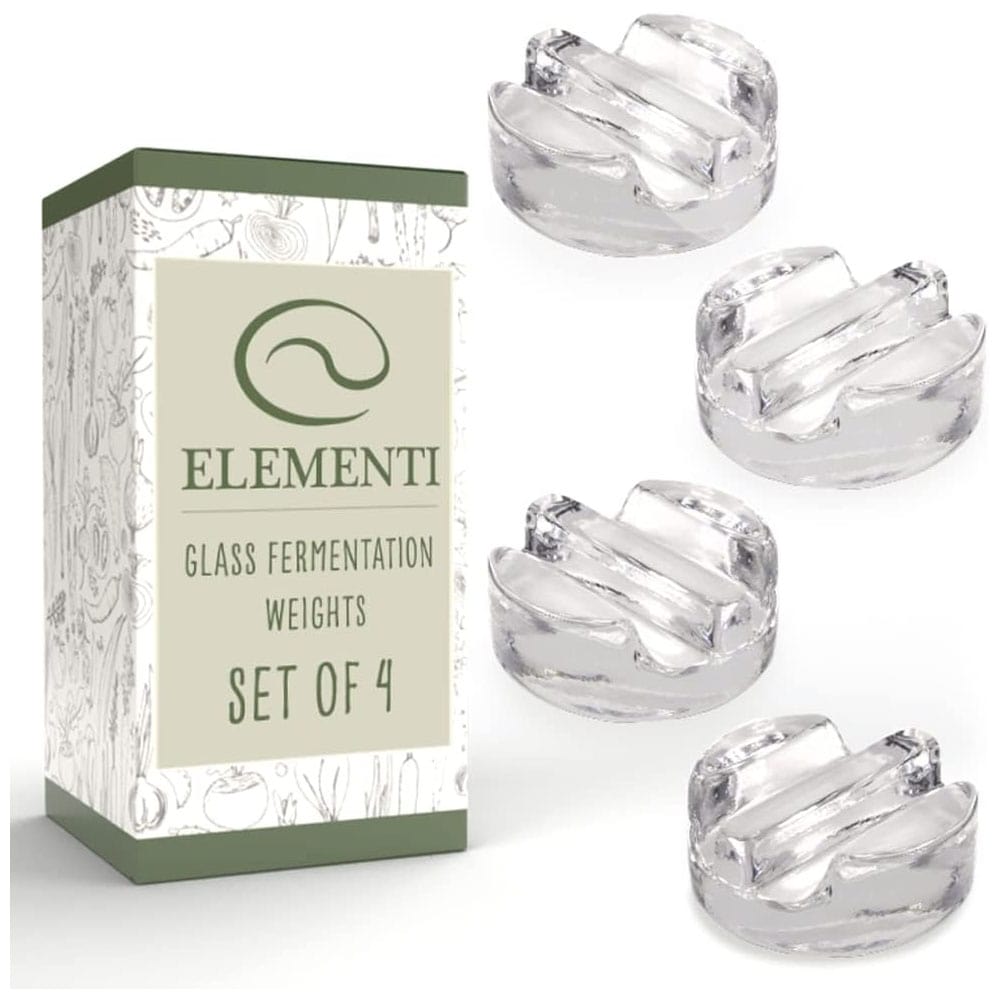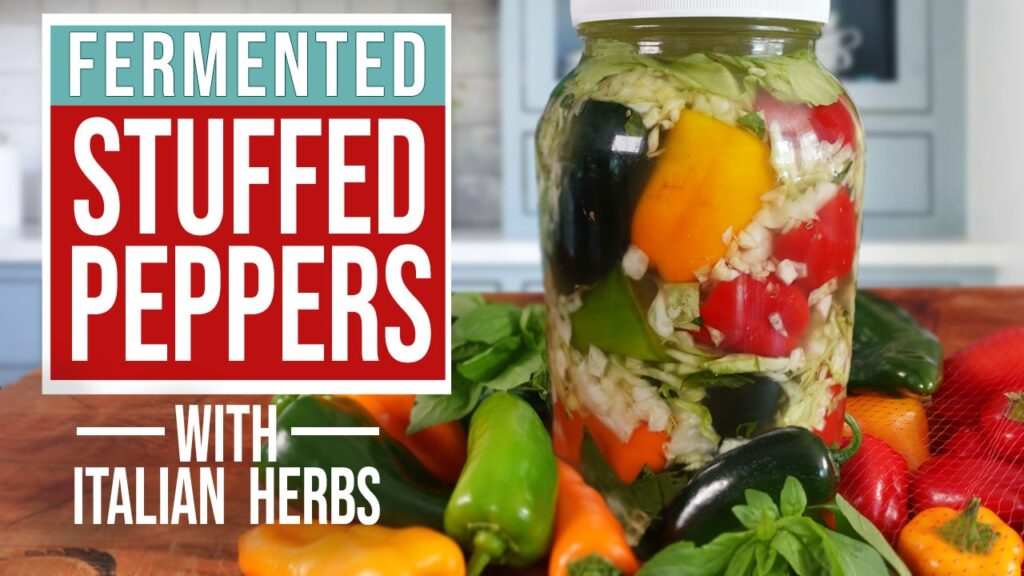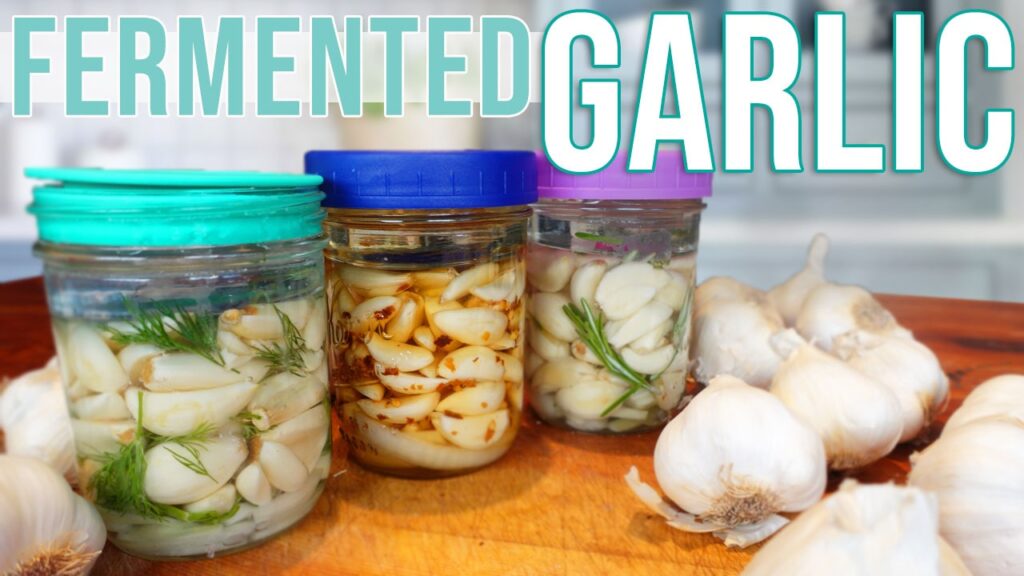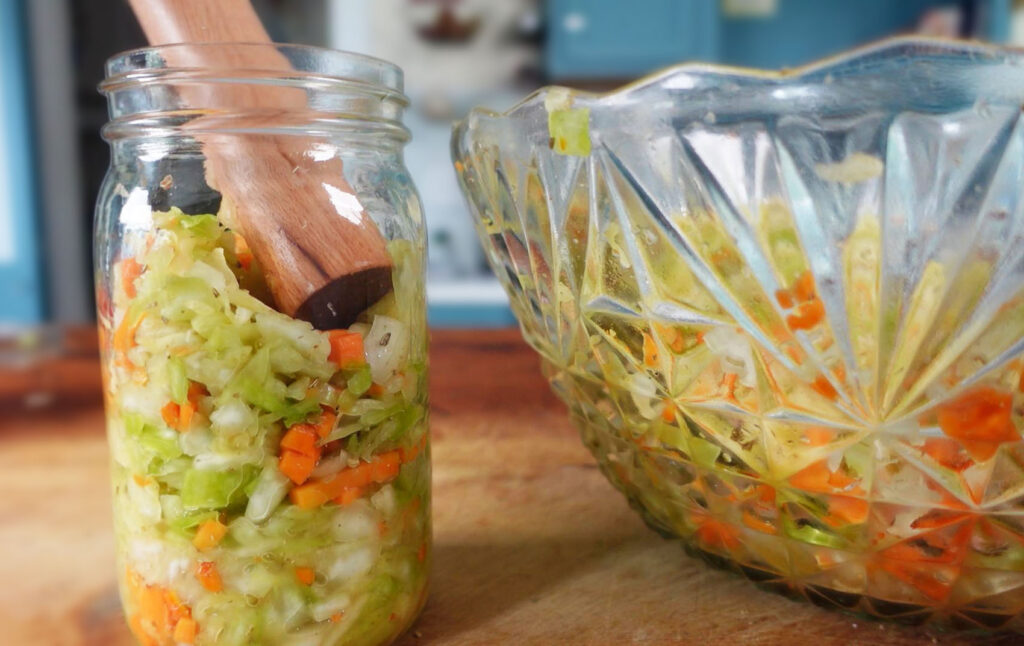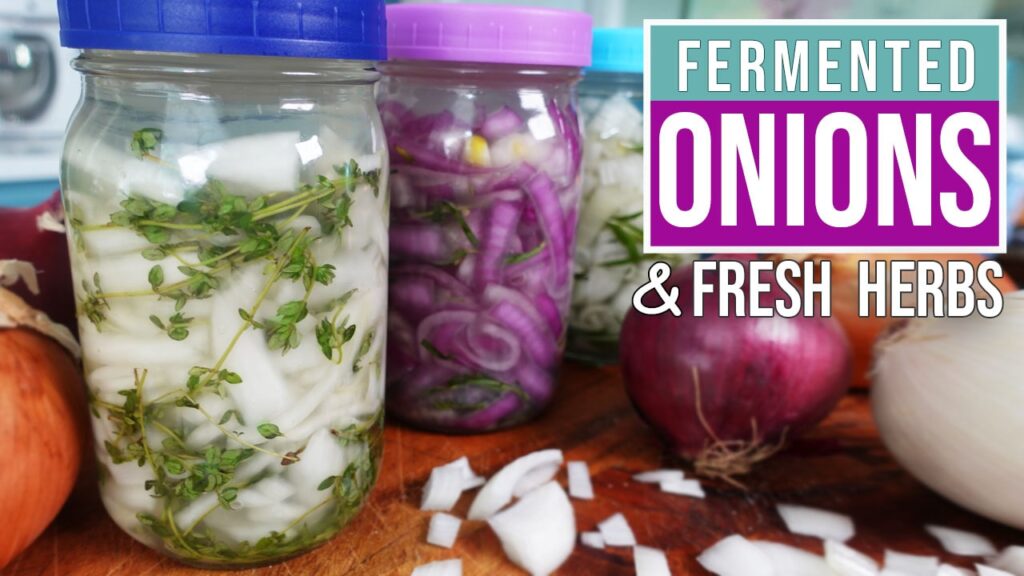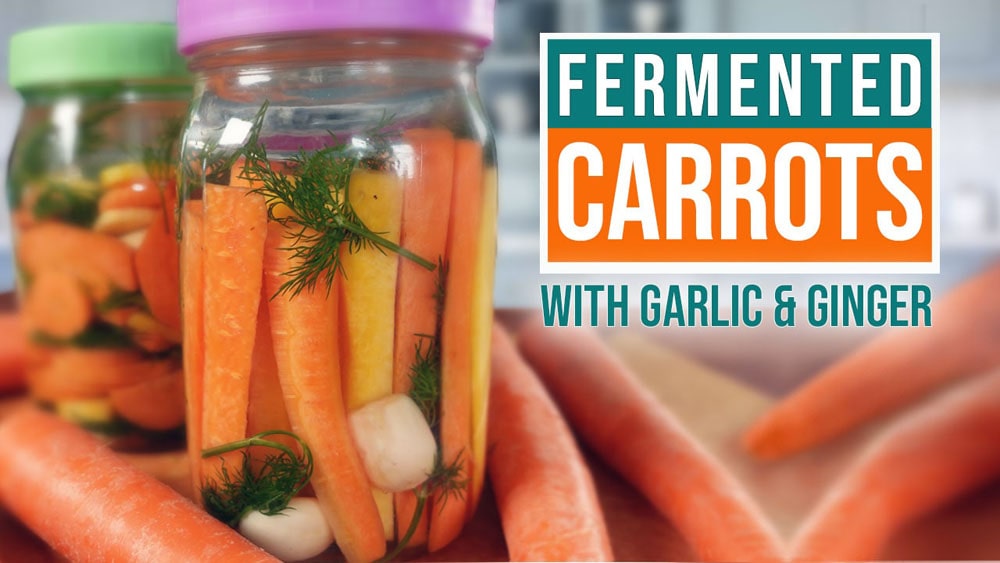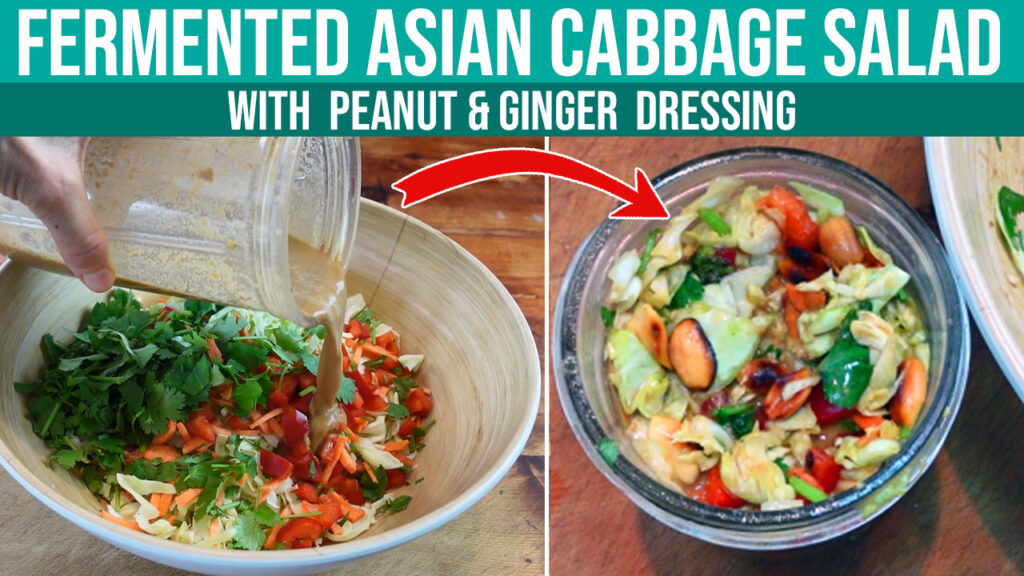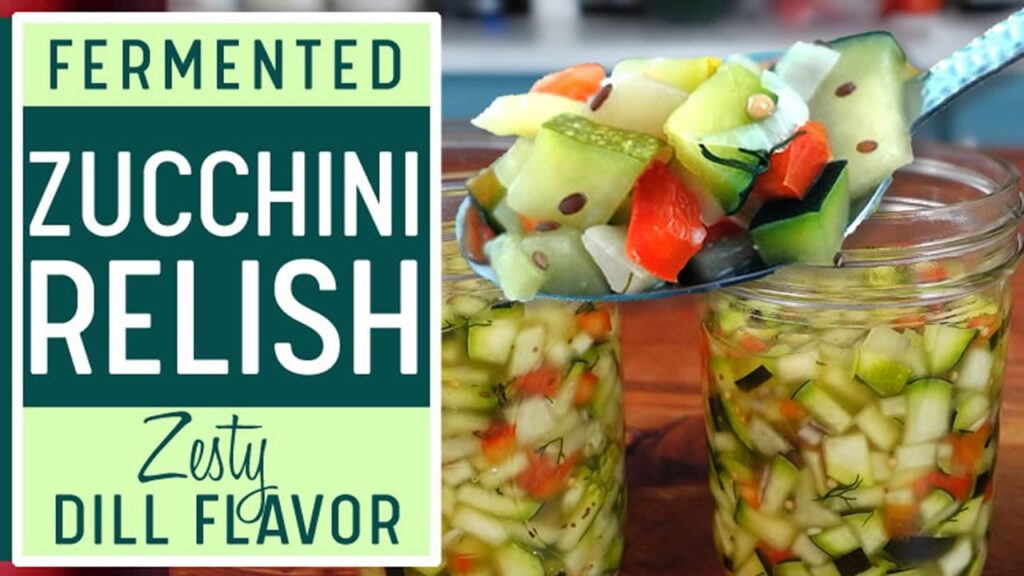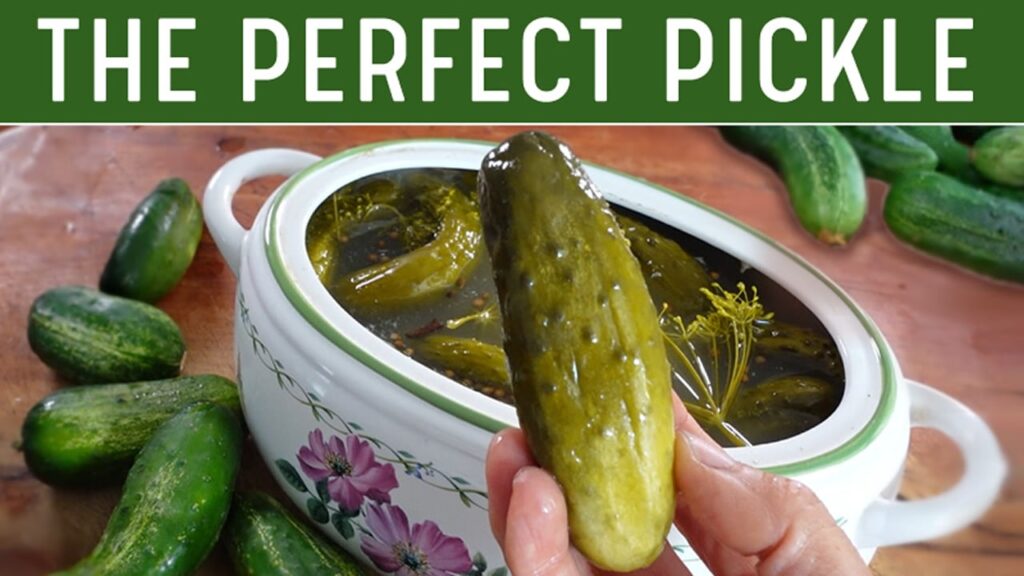
This “Fermented Onions” article contains affiliate links. Please read my affiliate disclosure.
Fermenting Onions: A Delicious & Probiotic Rich Recipe
Fermentation is a time-honored culinary tradition that transforms ordinary ingredients into extraordinary delights, and fermented onions are no exception!
This fermented onions recipe with fresh herbs is a delightful and simple recipe that not only elevates your meals, but also contributes to gut health by providing a rich source of healthy probiotics.
The Magic of Probiotics in Onions
Probiotics are essential microorganisms that play a crucial role in maintaining a healthy gut.1 Not all probiotics are the same, and their diversity is vital for optimal health.
While probiotic supplements you buy often contain only a few select strains, fermented foods introduce a variety of probiotic species into your body, each with its own benefits. For instance, fermented onions offer a unique probiotic profile that you won’t find in a bottle!
Some of the most common probiotic strains in bottled supplements include Lactobacillus Acidophilus, Bifidum, Plantarum, and Brevis.
However, a scientific study found that fermented onions contain unique probiotic strains such as Lactobacillus zymae, L. malefermentans, Acetobacter pasteurianus, A. orientalis and Citrobacter sp., C. freundii to name a handful.1 This makes fermented onions a valuable addition to your diet.
Ferment Onions Along With Me!
In this fermented onions recipe guide, I’ll take you through the entire process step-by-step. But if you want to ferment onions along with me, watch the video below 😊 I also provide more details and demonstrations that are exclusive to the video only!

Section 1: The Ingredients Needed For Fermenting Onions
Onions: Use any color you have on hand, but keep in mind each color has its own flavor profile. Although all onion varieties ferment deliciously, I have found red onions and other sweet varieties such as Walla Walla to be the best tasting once fermented.
Fresh Herbs: Fresh herbs play a crucial role in elevating the taste and aroma of fermented onions. Herbs like Tarragon, Thyme, and Rosemary are chosen for their savory notes, adding depth to the fermentation process.
Salt: Salt serves as a key component in the fermentation process, contributing to the creation of a brine when combined with water. This brine helps create an environment that encourages the growth of beneficial lactic acid bacteria while inhibiting the growth of harmful microorganisms.
Throughout history, salt has been a crucial element in food preservation, allowing communities to store food for extended periods.
Type of Salt
Avoid using a salt that contains anti-caking additives because they can interfere with the fermentation process. To know if your salt contains them, read the ingredients on the salt package. Any salt will work with fermentation so long as the ingredients read salt and only salt.
Section 2: Instructions
1. Prepare the Brine: Begin by mixing the salt into the water to create the brine and set it aside.
2. Slice the Onions: Peel and slice the onions to your desired thickness. A thick slice will maintain its structural integrity better throughout the fermentation process over a thin slice.
3. Combine Ingredients: Place the sliced onions and fresh herbs in a large mixing bowl. Pour the saltwater brine over the ingredients, ensuring they are well-coated. Allow the mixture to rest in the brine for 1-2 hours, during which the salt will soften the onions which will help them better load into the jar.

4. Load the Jar: Transfer the mixture of onions & herbs into a clean glass jar a couple of handfuls at a time. Use a mallet or your fist to press the mixture down which will help push air pockets up and out. Add a couple scoops of the brine to the jar and repeat.
- Once all the ingredients are loaded into the jar, including the liquid, ensure everything is submerged beneath the brine by giving a few more presses.

5. Add The Weight: The weight will help hold everything beneath the brine during the fermentation process.

Notes About The Fermenting Weight
When fermenting foods it’s essential that the food remains submerged beneath the brine. These are the glass fermentation weights I recommend and personally use. They are lead free and heavier than other glass fermenting weights I have used in the past.
If you do not have glass fermenting weights, watch my YouTube video on DIY Fermentation Weight Ideas.

Section 3: The Fermentation Process
The Fermentation Period: Cover the jar with a loose lid and place it on a countertop for 10 to 21 days at room temperature. When the lid is on the jar loosely instead of tight, the fermentation gasses are able to escape and you do not need to burp the jar. The longer the onions ferment, the more flavors and probiotics develop.
Monitoring the Fermentation: Keep a close eye on the fermentation process, especially during the first week. The following are indications of a healthy fermentation…
Color & Brine: You’ll notice the the color of the onions will change from vibrant to muted. The brine will also become cloudy.
Bubbles: During the first week of fermentation, bubbles will appear. These are not oxygen bubbles, but rather carbon dioxide bubbles. Carbon dioxide is a byproduct of the good microbes and indicates they’re busy doing their job inside the jar.
Kahm Yeast: Foods high in natural sugars such as onions are prone to develop kahm yeast. This is a wild yeast that is naturally present in the air and settles on the surface of a fermentation. Although kahm yeast is ugly, it is harmless.
Watch my Kahm Yeast video on YouTube or read my Kahm Yeast Article on this website where I do a deep dive into the topic along with visual examples.

Section 4: End the Fermentation
Anywhere between 10 and 21 days, taste the fermented onions. Do they taste delicious? Is the texture enjoyable? The longer the onions ferment, the more their flavor will develop, sourness will increase and their texture will also continue to soften.
When they reach your preferred level of flavor and tenderness, it’s time to transfer them to the refrigerator for long-term storage. Here’s how to do it:
- Open: Remove the lid and take a look. Most likely you’ll see a layer of kahm yeast on top. This is okay.
- Remove The Weight: With clean hands, reach in through the kahm yeast and remove the fermenting weight. Use a paper towel as a gripper if the weight is too slick. The good news is that the fermenting weight will take the bulk of the kahm yeast out with it.
- Remove The Kahm Yeast: Next, use a paper towel to wipe off the remaining kahm yeast from the inside of the jar. You can also dab the surface to pick up remaining kahm yeast flakes. Remember that kahm yeast is harmless, so if some pieces remain, it’s ok!
- Storage: Place a regular tight lid on the jar. Then transfer to the refrigerator where they will last many months.
In my Fermenting Onions video, I provide a demonstration on how to remove kahm yeast.
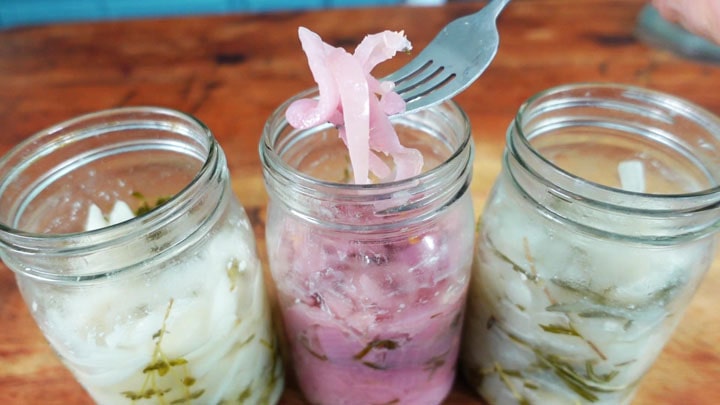
Section 5: Is My Fermentation Safe To Eat?
This is the #1 question from fermenting newbies and is an important topic to cover. Below are the 4 safety check points to follow to ensure your fermented onions are safe to eat.
- Sight: When you open the jar, inspect the onions for any mold. If there is none, move on to the next check point.
- Smell: Put your nose up the the jar and take a whiff. A healthy fermentation should have a light soury-sweet smell, never foul or offensive.
- PH: Take a PH reading with either a digital meter or paper test strips. A safe fermentation has a PH below 4.5.
- Taste: If the above points all pass, it’s time to take a taste! The onions should taste pleasant (even delicious) and never foul or rotten.
Click here to view or print my 4-point checklist:
Section 6: How to Enjoy Fermented Onions
Fermented onions can enhance various dishes, but remember not to cook them, as heat can destroy the probiotics. Here are some ideas:
1. Sandwiches: Add a tangy crunch to your sandwiches, I have a special “energy sandwich” I made for my fermented hummus recipe.
2. Salads: Sprinkle them on top of your salads for an extra burst of flavor.
3. Cooked Dishes: While you shouldn’t cook fermented onions, you can add them to cooked meals like stir-fry, tacos, or pasta after cooking to preserve their probiotic benefits.
Fermented onions are a versatile and tasty addition to your culinary repertoire. They not only tantalize your taste buds but also provide a unique blend of probiotics. Embark on a flavorful journey of fermentation and savor the benefits of this ancient art in your modern kitchen!
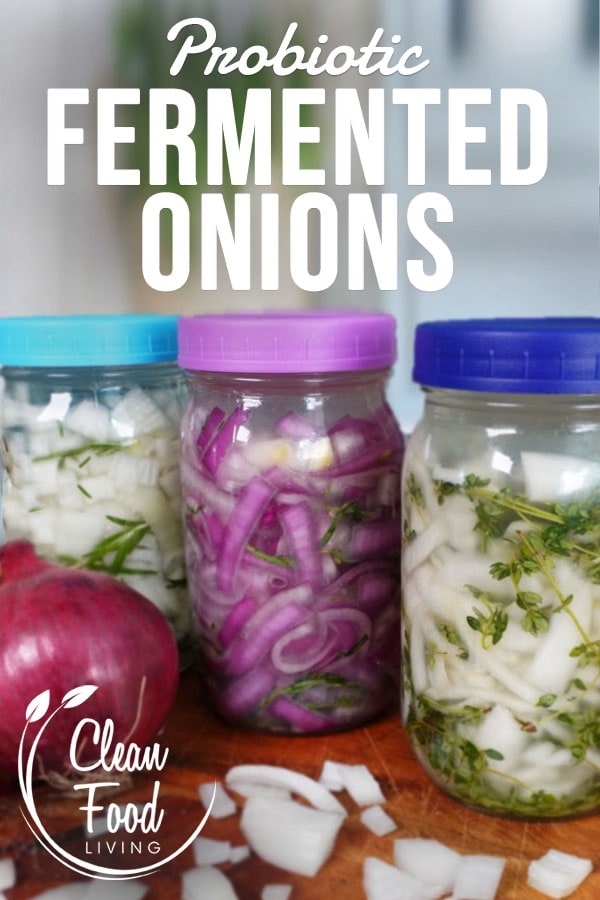
Fermented Onions Recipe
Equipment
- Quart/Liter Jar Wide Mouth
- Glass Fermentation Weight Alternative weights are okay to use
- Lid A regular lid will work. Optionally, you can use a specialty fermenting lid.
- Canning Funnel Optional
- Wooden Dowel Optional
Ingredients
- Onions (as many needed to fill the jar) sliced
- handful Fresh Herbs Suggestions: Tarragon, Thyme, Dill & Rosemary
- 1 tbsp Salt Pure salt without anticaking agents
- 1.5 c Water
Instructions
Brine Instructions
- Combine the water & salt and mix thoroughly. Set aside.
Onion & Herb Instructions
- Slice the onion(s). The Herbs can remain whole and on the stem.
- Place the onions and herbs in a mixing bowl.
- Pour the brine over the ingredients and toss to coat everything with the brine.
- Allow the onions and herbs to rest in the brine for 1 to 2 hours. Toss with clean hands to refresh the brine coating every 30 minutes.
Load the Jar
- First, clean the jar, weight and lid by washing them in hot soapy water.
- Scoop 1-2 handfuls of the onion and herb mixture into the jar.
- Press the mixture down with a tart tamper, wooden dowel or other type of mallet.
- Add 1-2 scoops of the brine, no measurement needed.
- Repeat these steps until the jar is full.
- Press down with the mallet one last time before adding the weight.
- Set the jar on a dish to catch any possible brine overflow as you add the fermenting weight and push it down as much as you can. The brine level should be near the top of the jar and everything submerged beneath it.
- Place a loose lid on the jar. So long as the lid is loose, the fermenting gasses will be able to escape and you will not need to burp the jar.
Fermentation Period
- Place the jar(s) on the countertop at room temperature for 10 to 21 days. Keep the jar of the fermenting onions on a towel or dish to catch any possible brine overflow.
What To Expect
- Colors: will change from vibrant to muted tones.Bubbles: Carbon dioxide bubbles will form during the 1st week of fermentation, then die off during week 2 and 3.Smell: A healthy fermentation should have a light soury-sweet smell. If the fermentation smells offensive or rotten, throw it away.Kahm Yeast: When fermenting foods that contain a lot of natural sugars like onions, kahm yeast will most likely develop on the surface. Although unattractive, it is harmless. Watch my Kahm Yeast video on YouTube or read my Kahm Yeast Article at CleanFoodLiving.net where I do a deep dive into the topic along with visual examples.
End the Fermentation
- When you decide to end the fermentation period (a minimum of 10 days up to 21 days) is based on your taste preference. The longer the onions ferment, the more their flavors will develop and their texture will soften.
- Open the jar and take a look. Most likely you’ll see a layer of kahm yeast on top. This is okay. With clean hands, reach in through the kahm yeast and remove the fermenting weight. Use a paper towel as a gripper if the weight is too slick.
- Remove any remaining kahm yeast. The good news is that the fermenting weight will take the bulk of the kahm yeast out with it. Next, use a paper towel to wipe off the remaining kahm yeast from the inside of the jar. You can also dab the surface with a paper towel (or use a spoon) to pick up remaining kahm yeast flakes. Remember that kahm yeast is harmless so if some pieces remain, it’s ok! *Demonstration of how to do this is provided in the video.
- To store long term, keep the weight out of the jar and put the lid back on tightly.
- Place the fermented onions in the refrigerator where they will last for many months.
Video
Citations
- Cheng L;Luo J;Li P;Yu H;Huang J;Luo L; (n.d.). Microbial diversity and flavor formation in onion fermentation. Food & function. https://pubmed.ncbi.nlm.nih.gov/25088041/#:~:text=malefermentans%2C%20L.,microorganisms%20involved%20in%20onion%20fermentation

